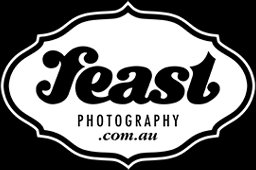“Stilled Life”
My years of shooting everything from high fashion to coal have taken me to wild and wondrous places. These experiences have given me a front row seat at the sources of our food supply. I’ve seen the good, the bad and the shockingly ugly. That connection has given me a enormous respect for the plants and animals that give up their life to sustain ours. For these reasons I’ve made personal choices to grow my own organic veggies, and while catching our own meat is not always possible or practical, I support farmers that provide ethical, natural homes for the animals during their lifetime.
A recent survey highlighted that today’s Australian children believed yoghurt came from trees. This serves to highlight the growing gap between farm and plate and brought me upon the notion that when you don’t know your food’s history, its easy to not think twice about it—but when you do see what’s really going on, its impossible not to be affected. Not only has the world become mentally removed from knowing their food source, but sadly they’ve become disconnected from the responsibility of how the food is reared, caught and killed.
I’ve used this subject as the challenge for my latest work in collaboration with food stylist Jaime Reyes. I wanted to achieve two things, firstly, convey how this lack of awareness allows poor farming and animal abuses to continue on in the dark…and hope that by bringing some attention to it, some will start to see the light.
This interplay of light and dark is reflected by the chiaroscuro lighting used—a Renaissance technique literally meaning light – dark, employed by the great master painters, such as Willem Kalf and Vermeer in the 17th Century. It is a dramatic use of lighting, hyper-focusing the viewer on the subject at the exclusion of all else. My renewed use of the old technique here, hopefully encourages us all to focus and think about how all creatures deserve a quality of life and a respectful, humane end—and that the power to make it so belongs with each individual.
And secondly, from a technical perspective, it was also an opportunity for me to slow down, remember and be deliberate. In the digital age, the shooting process has sped up to match the technology as digital is immediate and in ways more forgiving, requiring less attention to detail. “Fix it in Photoshop” is a term I hear daily. The expectation is to pack in more images in less time. Not so long ago, this was not possible, the limitations of our equipment, film and printing required us to have an extensive knowledge of the machinations of our hardware, a precise understanding of lighting, photographic techniques, problem solving and translating that all to emulsion. Each exposure was critical and there was a deliberate, considered pause to re-examine every aspect before pressing the shutter. For me this series is a chance to do just that, pause, consider and remember techniques handed down to me by my mentors and enjoy the process of creating something new the old way.



